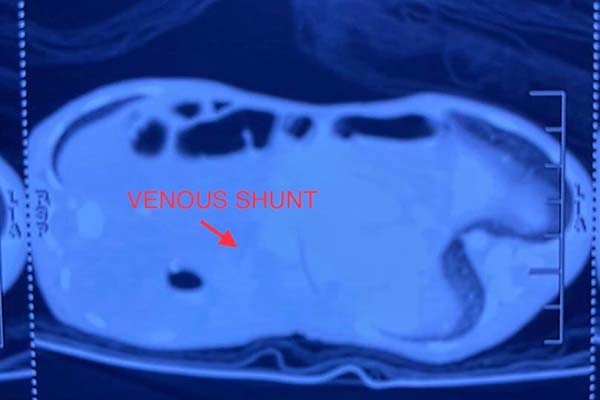Keywords
Abstract
Anaesthesia for early emergency separation of premature conjoined twins is extremely rare as surgery generally done electively between 2 to 4 months of age. However, urgent separation may be needed due to life-threatening complications. We report a case of successful early separation of premature omphalopagus twins at 36 weeks of gestational age with a combined weight of 2.7 kg. To the best of our knowledge, this was the lowest weight yet reported of successful surgical separation in Malaysia. Early separation was indicated as extrauterine twin-to-twin transfusion with unbalanced blood shunting through the porto-systemic anastomoses within the shared liver parenchyma potentially risked impending life-threatening organ failures. Anaesthesia for the separation of premature conjoined twins in the emergency setting requires extensive multidisciplinary discussion and planning. Factors predicting difficult anaesthesia in this case were the twins’ size and age as well as duration of anaesthesia. Two separate anaesthetic teams were required with all team members well versed in the operative workflow. Simultaneous airway management, prevention of hypothermia, and vigilant haemodynamic monitoring are key to successful anaesthesia in premature conjoined twin separation.
References
Mutchunuck OM, Luna-Munoz L, Amar E, et al. Conjoint twins: a worldwide collaborative epidemiological study of the International Clearinghouse for Birth Defects Surveillance and Research. Am J Med Genet C Semin Med Genet. 2011;157C:274-287. https://doi.org/10.1002/ajmg.c.30321
Mackenzie TC, Crombleholme TM, Johnson MP, et al. The nature history of prenatally diagnosed conjoined twins. J Pediatr Surg. 2002; 37(3): 303-309. https://doi.org/10.1053/jpsu.2002.30830
Spitz L, Kiely EM. Experience in the management of conjoined twins. Br J Surg. 2000;(89):1188-92. https://doi.org/10.1046/j.1365-2168.2002.02193.x
Spitz L, Kiely EM. Success rate for surgery of conjoined twins: Correspondence. The Lancet. 2000;356:1765. https://doi.org/10.1016/S0140-6736(00)03220-7
Grizelj R, Sindičić Dessardo N, Bulić K et al. Successful separation of xypho-omphalopagus conjoined twins with extra uterine twin to twin transfusion syndrome: a case report. Croat Med J. 2019 Aug;60(4):301-308. https://doi.org/10.332/cmj.2019.60.301
Thomas JM, Lopez JT. Conjoined twins- the anaesthetic management of 15 sets from 1991-2002. Paediatr Anaesth. 2004;14:117-129. https://doi.org/10.1046/j.1460-9592.2003.01249.x
O’Neill JA, Holcomb CW, Schnaffer L, et al. Surgical experience with thirteen conjoined twins. Ann Surg. 1988;208:299-312. https://doi.org/10.1097/00000658-198809000-00007






